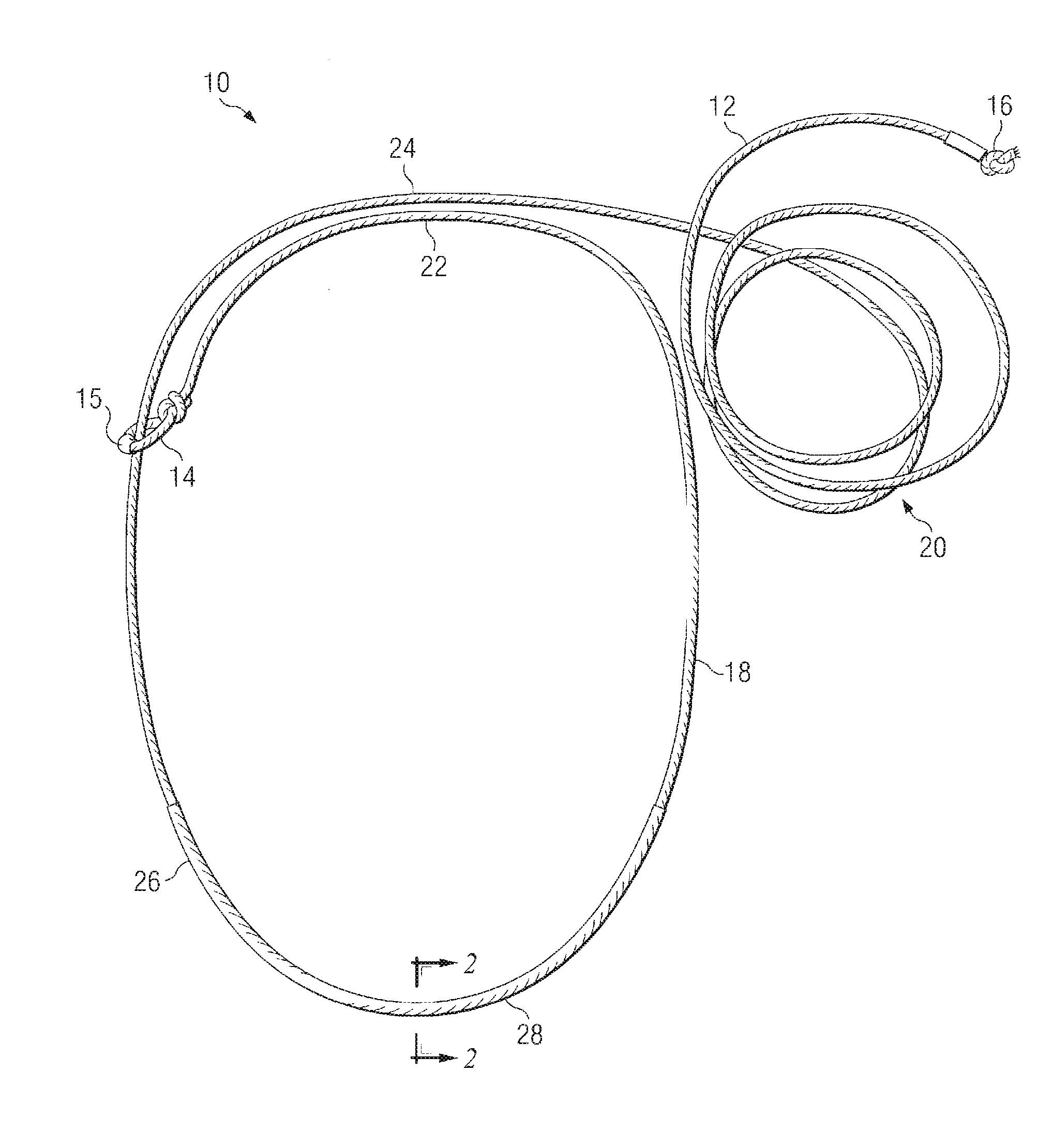Weighted lariat
a weighted lariat and strap technology, applied in the field of lariats, can solve the problems of increasing the chance of ropers falling off, and achieve the effects of reducing wear, increasing longevity, and thickening the tip of the loop
- Summary
- Abstract
- Description
- Claims
- Application Information
AI Technical Summary
Benefits of technology
Problems solved by technology
Method used
Image
Examples
first embodiment
[0026] Referring to FIG. 2, there is shown a cross-sectional view of the invention comprising a standard three-strand lariat 30 having an elongated metal wire 32 positioned in a groove 34 between the strands 36 comprising the three-strand lariat 30, and a length of shrink-wrap tubing 38 extending around the strands 36 and the elongated metal wire 32.
second embodiment
[0027] Referring to FIG. 3, there is shown a cross-sectional view of the invention. A standard four-strand lariat 40 is equipped with an elongated metal wire 32 positioned in a groove 34 between the strands 36, and a length of shrink-wrap tubing 38 secured around the exterior. Also shown is a center strand 42 that is common in four-strand lariats.
[0028] Referring to FIG. 4, there is shown a perspective view of an individual 44 mounted on horse 46 throwing a lariat 48 at a steer 50, and in particular showing the action or curl 52 that is desired and which the present invention improves. The action 52 is shown behind the steer's 40 head and neck, which is the most desirable positioning, and which is what the invention promotes. Referring to FIG. 5, there is shown a perspective view of an individual 44 mounted on a horse 46 throwing a lariat 48 at the hind legs 54 of a steer 50, and in particular snowing the follow through 55 that is desired and which the present invention improves.
third embodiment
[0029]FIG. 6 illustrates the invention comprising a lariat 60 that is similar in many respects to the lariat 30 of FIG. 2 but which omits the metal strands 32 thereof. The lariat 60 comprises three strands 66. A portion of the loop comprising the lariat 60 is weighted by a length of shrink-wrap material 68 which is secured tightly around the strands 66.
PUM
 Login to View More
Login to View More Abstract
Description
Claims
Application Information
 Login to View More
Login to View More - R&D
- Intellectual Property
- Life Sciences
- Materials
- Tech Scout
- Unparalleled Data Quality
- Higher Quality Content
- 60% Fewer Hallucinations
Browse by: Latest US Patents, China's latest patents, Technical Efficacy Thesaurus, Application Domain, Technology Topic, Popular Technical Reports.
© 2025 PatSnap. All rights reserved.Legal|Privacy policy|Modern Slavery Act Transparency Statement|Sitemap|About US| Contact US: help@patsnap.com



